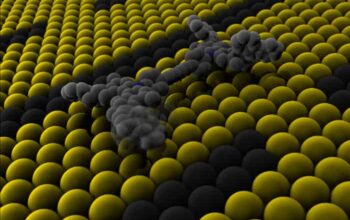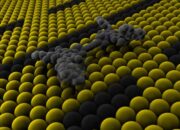Quantum computing exists at the precarious intersection of classical mechanics and uncharted realms of quantum mechanics—an arena where reality bends and our traditional perceptions of existence are challenged. The query, “If you look at a quantum computer, does it stop working?” prompts profound reflections on the nature of observation, the delicate dance of qubits, and the underlying principles of quantum mechanics that govern these systems.
At the heart of quantum computing lies the qubit, an extraordinary counterpart to the classical bit. While a classical bit can only embody a state of 0 or 1, a qubit exists in a superposition of states, representing both 0 and 1 concurrently. This unique capacity to occupy multiple states simultaneously holds the promise of exponentially increased processing power. However, this very superposition is where the enigma of observation arises, reminiscent of Schrödinger’s famed thought experiment involving a cat that is both alive and dead until observed. This illustrates the peculiar feature of quantum mechanics known as the observer effect.
To grasp the nuances of this effect, consider the Copenhagen interpretation of quantum mechanics, a cornerstone of quantum theory. This interpretation posits that the act of measurement collapses the wave function of a quantum system, forcing the qubit into a definitive state—either 0 or 1. Thus, the act of ‘looking’ at a quantum computer, in a metaphorical sense, acts as a shutter that snaps a fleeting moment of superposition into a fixed reality. The qubit’s potential diminishes as the vibrant possibilities are constrained into binary absolutes. The metaphor extends further when considering that, much like a fleeting dream, the potential solutions a quantum computer can produce evaporate when they are crystallized into the tangible realm of observation.
The complexities of this phenomenon can evoke the imagery of a painter’s canvas. As the artist applies brushstrokes, the painting is only a possibility, teeming with potential. It is only when one steps back to observe the finished product that the chaotic beauty transforms into a fixed image on the canvas. In a similar vein, a quantum computer’s capabilities are multifaceted and complex until they are ‘observed’. This metaphorical transformation hinges on the act of measurement, leading us to wonder whether the universe, in all its splendid chaos, dances intimately with our consciousness and its observations.
Moving beyond mere observation, one must also consider the implications of perturbation. Just as a gentle breeze may alter the course of a feather in flight, any interaction with a quantum system—be it a photon emitted or absorbed, or a thermal fluctuation—can disrupt its delicate state. The accessibility of quantum states relies heavily on an environment free from disturbances. This phenomenon reinforces the notion that quantum computers must be meticulously shielded from their surroundings to maintain coherence, the fragile state necessary for computation. Cryogenic cooling—typically employed to minimize thermal noise—is a prime example of the lengths to which researchers go to preserve qubit integrity.
Delving deeper, we confront the role of entanglement, a facet of quantum mechanics where particles become interdependent, regardless of the distance separating them. When two qubits are entangled, the state of one is intrinsically linked to the state of another. The implications of entanglement illumine another caveat of observational disturbance. While entanglement enhances computational power dramatically—allowing simultaneous processing of vast arrays of data—the entangled state is precarious. Engaging with one qubit, such as observing its behavior, inadvertently impacts its partner, collapsing the entangled state into defined outcomes. This interplay unveils the cosmic interconnectedness of qubits, echoing philosophical inquiries into the fabric of reality itself.
Furthermore, the act of measurement within quantum computing often necessitates methodology that is somewhat counterintuitive. Quantum error correction mechanisms, essential for mitigating the influence of decoherence, introduce additional layers of complexity. These techniques utilize redundancy, employing multiple physical qubits to represent a single logical qubit, thereby facilitating resilience against error without destroying the superposition that powers quantum computations. This paradoxical requirement for redundancy surrounding singularity starkly illuminates the dichotomy between the deterministic and probabilistic realms, underpinning quantum mechanics.
As the discourse unfolds, one must also address the philosophical ramifications of observing a quantum computer. Does the mere act of observation strip away the ethereal potential harbored within the quantum state? Conversely, can the observer’s existence, intertwined with the quantum matrix, be perceived as a form of interaction that enhances the evolution of computation? The philosophical implications of these questions transcend the boundaries of scientific inquiry and invite a broader discourse on the relationship between observation, consciousness, and existence.
In conclusion, the inquiry into whether a quantum computer ceases to function upon observation encapsulates profound elements of quantum mechanics, leading to a deeper understanding of the metaphysical implications of consciousness itself. By gazing upon such a paradoxically interactive entity, one plunges into a universe of perplexing realities where measures of observation shape existence. Consequently, the quantum journey—filled with enigmas and philosophical intrigues—fortifies our understanding of the delicate interplay between observer and observed, molding our comprehension of reality in the quantum age.










